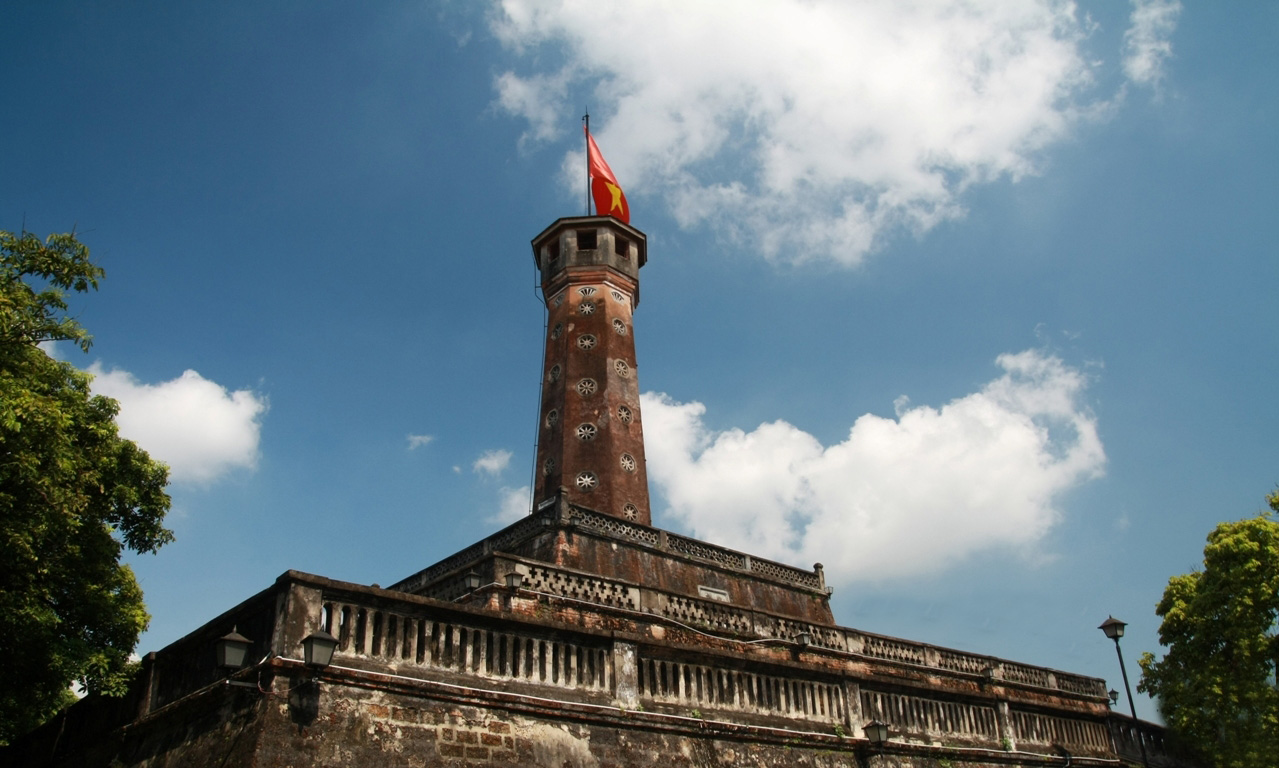
The Flag Tower of Hanoi which is located in the world heritage complex – Thang Long Imperial Citadel, is one of the symbols of the city at the age of nearly 200 years. It is considered one of the most famous sights in the capital for many tourists of Hanoi Daily Tour.
Location and History
The construction began in 1805 and completed in 1812 during the Nguyen dynasty with original construction purpose as an observatory. At that time, Hanoi was originally named as Thang Long (ascending dragon City). When King Minh Mang changed Thang Long into the provincial city of Hanoi, the flagpole became known as the Ha Noi Flag Pole.
The Ha Noi flagpole is located in the Tam Mon (Three Gates) area under the Le dynasty, which built the Thang Long royal citadel. However, under the Nguyen, Thang Long changed the orientation of its gates. After several historical changes, the destination was renamed and it lies within the grounds of the Vietnam Military History Museum, at the corner of Dien Bien Phu and Hoang Dieu Road, nowadays.
Most of the ancient structure in Thang Long Imperial Citadel was destroyed during the French invasion from 1896 to 1897, however, Ha Noi Flagpole is one of rare architecture still remain until now. The image of Flag Tower has been embedded in many remarkable historic events of Vietnam, for example, the flag of Vietnam flew on the top of the Flag Tower for the first time in 1945, after The August Revolution’s success, and the capital liberation day on October 10th in 1954. So the image of Flag Tower is printed on the money paper issued firstly by the Bank of Vietnam.
Architecture
The Ha Noi Flag Pole is composed of three-tiered with a square peak and a pyramid-shaped tower.The first tier, which is the largest level, is 42.5 meters wide and 3.1 meters high. There are two staircases lead to the second tier, which measures 25 meters along each side and 3.7 meters in height with four doors. The words “Nghênh Húc” ( Welcome dawn’s sunlight”) are inscribed on the eastern door. The western door with the words “Hồi Quang” (Reflecting of light” and the words “Hướng Minh” (“Directed to the sunlight”) are alternately inscribed on the southern door. The final tier is and the third 12.8 meters wide and 5.1 meters high. Inside the pole is a spiral staircase with 52 steps leading to the top.The tower is lighted by 36 flower-shaped and 6 fan-shaped windows along the sides to provide light and fresh air. In all, the flagpole is 41metres high and the National Flag of Vietnam is on top of the tower.
Hanoi Flag Tower offers a breathtaking view of the watchers standing on it. Join Hanoi City Tour to not miss the opportunity to admire Hanoi from above.
To enjoy the most beautiful sightseeings in Vietnam by your eyes, you can see some itineraries below Halong Bay Cruises – Hanoi Tours – Vietnam Tours – Sapa Tours – Package Tours – or book a private car to discover where ever you want to enjoy the Vietnamese taste.
